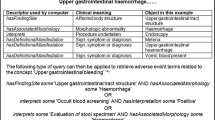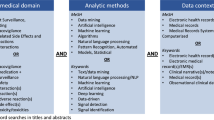Abstract
Databases held by regulatory agencies and by pharmaceutical companies may be used to detect safety signals. We compared the utility of a company safety database with those from two large regulatory authority databases in assessing potential safety signals in order to understand how the different sources may be used. Proportional reporting ratios (PRRs) were calculated from the company database for historical events that had led to changes in prescribing information (PI) and were compared to PRRs calculated in external databases (the US Food and Drug Administration Freedom of Information database and the UK Adverse Drug Reactions On-line Information Tracking database). For most events there was agreement between all of the databases. For some selected historical events we have shown that if a company database is large enough and a wide range of therapeutic areas is covered then there is insignificant difference between PRRs calculated from the company database and larger external databases.
Similar content being viewed by others
References
Evans SJW. Pharmacovigilance: a science or fielding emergencies? Stat Med. 2000;19:3199–3209.
Moore N. Thiessard F. Begaud B. The history of disproportionality measures (reporting odds ratio, proportional reporting rates) in spontaneous reporting of adverse drug reactions. Pharmacoepidemiol Drug Safety. 2005;14:285– 286.
Evans SJW. Waller PC, Davis S. Use of proportional reporting ratios (PRRs) for signal generation from spontaneous adverse drug reaction reports. Pharmacoepidemiol Drug Safety. 2001;10:483–486.
Rothman KJ. Lanes S, Sacks ST. The reporting odds ratio and its advantages over proportional reporting ratio. Pharmacoepidemiol Drug Safety. 2004;13:519–523.
van Puijenbroek E, Bate A, Leufkens HGM, et al. A comparison of measures of disproportionaiity for signal detection in spontaneous reporting systems for adverse drug reactions, Pharmacoepidemiol Drug Safety. 2002;11:3–10.
Waller P. van Puijenbroek E, Egberts A, et al. The reporting odds ratio versus the proportional reporting ratio: “deuce.” Pharmacoepidemiol Drug Safety. 2004;13:525-526.
Roux E. Thiessard F, Fourrier A. et al. Evaluation of statistical association measures for the automatic signal generation in pharmacovigilance. IEEE Trans Inf Technol Biomed. 2005;9(4):518–527.
Almenoff J. Tonning JM, Gould L. et al. Perspectives in the use of data mining. Pharmacovigilance Drug Safety. 2005;28:981–1007.
Strom BL, Kimmel SE, eds. Textbook of Pharma-coepidemiology. (Chichester, UK: Wiley & Sons: 2006.
Kilgour-Christie J, Czarnecki A. Simmons V. Proportional reporting ratio calculations from a pharmaceutical company database. Pharmacoepidemiol Drug Safety. 2001:10(Suppl 1):S159.
Kilgour-Chrislie J, Czarnecki A. Safety signals verified using PRRs on regulator) authority databases. Pharmacoepidemiol Drug Safety. 2002:11 (Suppl 1):S145–S146.
Rodriguez EM. Staffa JA, Graham DJ. The role of databases in drug postmarketing surveillance. Pharmacoepidemiol Drug Safety. 2001; 10:407–410.
FDA Adverse Event Reporting System (AERS). Available at: http://www.fda.gov/cder/aers/default.htm. Accessed September 13, 2005.
Wood SM, Coulson R. Adverse drug reactions online information tracking (ADROIT). Pharm Med. 1993:7:203–213.
Dean AD. Dean AJ, Dicker RC. Epi Info Version 5: A Word Processing. Database and Statistical Program for Epidemiology on Microcomputers. Atlanta, GA: Centers for Disease Control: 1990.
Medicines Control Agency. 2001, Available al: http://www.accenture.com/Countries/UK/Services/By_Subject/Infrastrueture_Outsourcing/Client_Succcsses/MedicinesEcommerce.htm. Accessed May 2, 2006.
Author information
Authors and Affiliations
Corresponding author
Rights and permissions
About this article
Cite this article
Czarnecki, A., Voss, S. Safety Signals Using Proportional Reporting Ratios from Company and Regulatory Authority Databases. Ther Innov Regul Sci 42, 205–210 (2008). https://doi.org/10.1177/009286150804200301
Received:
Accepted:
Published:
Issue Date:
DOI: https://doi.org/10.1177/009286150804200301




